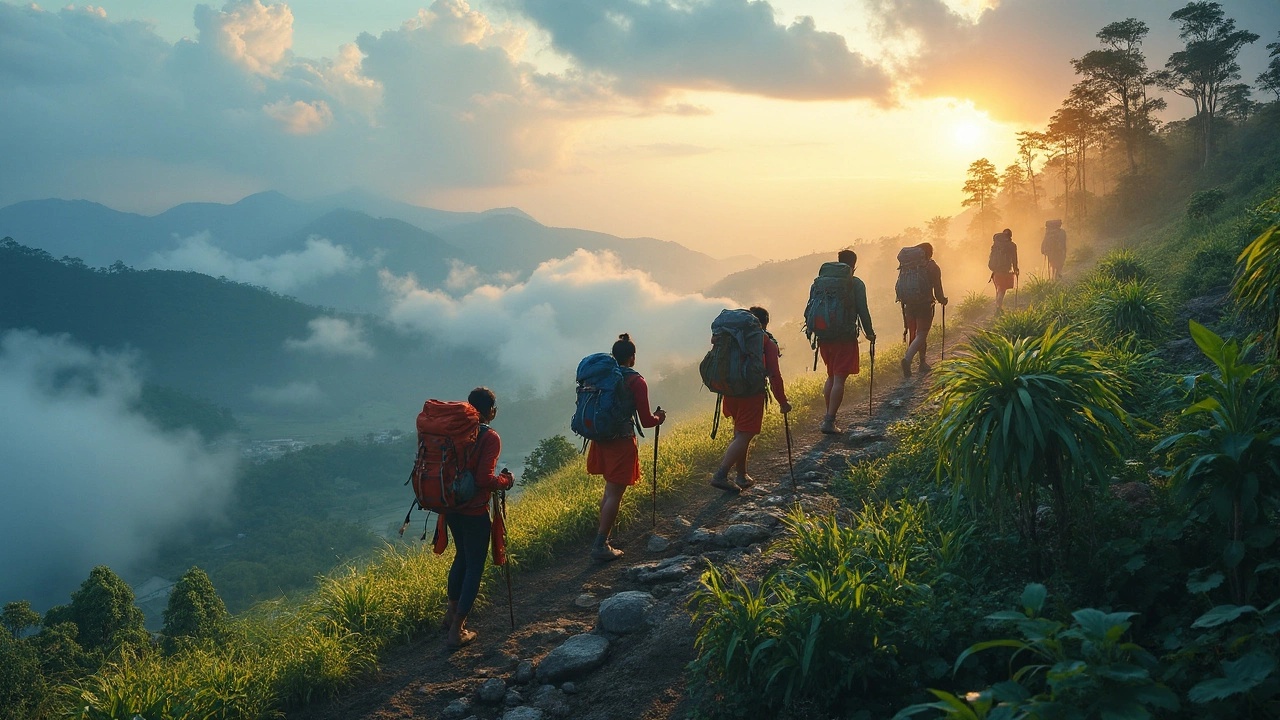SEARCH
Trekking Effects: What You Need to Know Before Your Next Hike
Thinking about hitting the trail but not sure what trekking will actually do for you? You’re not alone. Many newbies wonder if the effort, gear costs, and planning time are worth it. The good news is that trekking delivers clear benefits—better fitness, mental reset, and unforgettable scenery—while the right preparation keeps the experience enjoyable, not exhausting.
First, let’s talk fitness. A three‑day trek can burn 2,000‑3,000 calories, strengthen your legs, core, and improve cardio. You don’t need to be a marathon runner; even moderate walks with a loaded pack boost stamina. If you’re worried about injuries, start with short day hikes, build up pack weight slowly, and always stretch before and after.
Budgeting Your Trek: Real Numbers for 2025
Money often scares people off. Here’s a quick formula that works for most Indian treks: Transport + Accommodation + Food + Permits + Gear Rental = Total Cost. For a popular trek in the Western Ghats, expect transport around ₹1,200, budget guesthouses ₹1,500 per night, meals ₹500 per day, and a minimal permit fee of ₹200. Add a gear rental of ₹800 for a good sleeping bag and trekking poles, and you’re looking at roughly ₹7,000 for a 3‑day adventure.
If you’re heading to a high‑altitude route like the Himalayas, costs rise. Flights to the foothills can be ₹8,000‑₹12,000, and you’ll need a higher‑quality sleeping bag (₹3,500) and layered clothing. Use the 3‑layer rule—base, mid, shell—to avoid buying a whole wardrobe. Stick to the formula and you’ll see where every rupee goes.
Gear That Makes a Difference
Good gear is the backbone of a comfortable trek. The 3‑layer rule mentioned in one of our posts helps you stay warm without overheating. Start with a moisture‑wicking base layer, add an insulating mid layer (fleece or down), and finish with a waterproof shell. Pair that with sturdy, broken‑in trekking shoes—never wear brand‑new boots on the trail.
Don't forget a lightweight backpack (30‑40 L for a short trek), a reliable headlamp, and a compact first‑aid kit. Many travelers skip a water filter, but it’s cheap (₹600‑₹1,000) and can save you from dehydration.
One practical tip: pack a dry‑bag for electronics and documents. A sudden downpour can ruin a map or phone, and a dry‑bag adds almost no weight.
Now that you’ve covered fitness, cost, and gear, let’s look at where to go. Our tag includes posts like “Best Hiking Destinations” that highlight trails from the Aravalli to the Northeast. Each spot offers unique effects—some boost endurance with steep climbs, others reward you with tranquil lakes that soothe the mind.
Choosing a destination depends on what you want out of the trek. If you crave altitude and breathtaking vistas, aim for Ladakh’s Markha Valley. If you prefer lush greenery and moderate trails, the Western Ghats’ Kudremukh is perfect. Both routes provide the same core effects—improved health, stress relief, and a sense of achievement—but differ in preparation needed.
Lastly, remember safety. Check the latest weather reports, register with local authorities if a permit is required, and let someone know your itinerary. A quick call to a local guide can alert you to trail closures or wildlife activity.
Ready to feel the real effects of trekking? Pick a trail, plan your budget, gear up with the 3‑layer system, and hit the path. Your next adventure is just a few steps away.

Trekking in India: How Your Body Reacts and Benefits
Trekking in India isn't just an adventure for the soul; it's a workout for your body too. As you explore the stunning landscapes of India on foot, your body undergoes several changes, adapting and building strength. From altitude challenges to cardiovascular benefits, trekking offers unique physical perks. Here’s what you might experience on your trek, plus some tips to maximize your adventure.
Continue reading